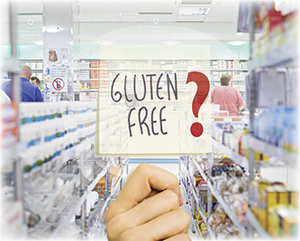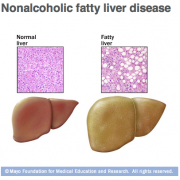Gluten in Medications: A Dangerous Prescription for Patients with Celiac Disease
 “For patients with celiac disease, there is only one treatment: follow a strict, lifelong gluten-free diet. Although labels on packaged foods identify allergens such as wheat, no such labeling requirement exists for medications, which may contain gluten in the excipients used to bind tablets together.” American Pharmacists Association, in Gluten in medications: A dangerous prescription for patients with celiac disease, December 1, 2015
“For patients with celiac disease, there is only one treatment: follow a strict, lifelong gluten-free diet. Although labels on packaged foods identify allergens such as wheat, no such labeling requirement exists for medications, which may contain gluten in the excipients used to bind tablets together.” American Pharmacists Association, in Gluten in medications: A dangerous prescription for patients with celiac disease, December 1, 2015
Pharmacist awareness
While the gluten-free diet has skyrocketed in popularity, “pharmacists need to know that celiac disease is a serious genetic autoimmune disease and ingestion of gluten can lead to long-term damage of the small intestine,” said Nancy Ginter, director of administration for the National Foundation for Celiac Awareness (NFCA). “Pharmacists need to be aware that medications containing gluten can cause harm to someone with celiac disease.”
An estimated three million Americans have celiac disease. The condition is self-managed through diet, and there is no pharmacological treatment, noted Ginter in an interview with Pharmacy Today. Patients are on their own to make sure they stay away from gluten-containing foods and products, whether the items are on grocery shelves or in the pharmacy aisles, she added.
Pharmacists can play an important role by helping patients with celiac disease determine if their medications contain gluten—but first the pharmacist must be aware that the patient has celiac disease or gluten sensitivity. “Pharmacists are very used to asking patients if they are allergic to any medications. But they don’t necessarily think to ask if they are allergic to any foods,” said Ginter. “If you ask questions about food allergies, then the patient may say, ‘I have a wheat allergy or celiac disease.’ That will put you on the right track.”
Labeling legislation
In collaboration with several organizations, NFCA has long called for gluten to be listed on medication labels or completely removed from medications. In 2013, Rep. Tim Ryan (R-OH) introduced the Gluten in Medicine Disclosure Act, which would mandate that gluten be disclosed as an ingredient on all medication labels. In September, Ryan and Rep. Nita Lowey (D-NY) reintroduced the bill as H.R. 3648, the Gluten in Medicine Disclosure Act of 2015.
According to Joseph Hill, director of government relations for the American Society of Health-System Pharmacists (ASHP), “my sense is that this issue will likely become part of the next round of PDUFA talks, which should begin in early 2016.”
Hill advises pharmacists to urge their members of the House to cosponsor the bill and generate support for the legislation.
Resources for pharmacists
To learn more about whether a medication may contain gluten, Ginter recommended that pharmacists and patients visit www.glutenfreedrugs.com, a website authored and maintained by Steve Plogsted, PharmD, a clinical pharmacist. Medications are listed alphabetically and by therapeutic category.
“It is a good list and a place where pharmacists can go to do an initial check,” said Ginter. She noted that pharmacists should call the drug manufacturer for more detailed information.
Another resource for pharmacists is the Gluten in Medications Guide, created by NFCA and ASHP. The guide contains information about excipients and starch derivatives found in medications. To view the guide and to learn more about gluten in medications, visit www.celiaccentral.org/gluteninmeds/.














